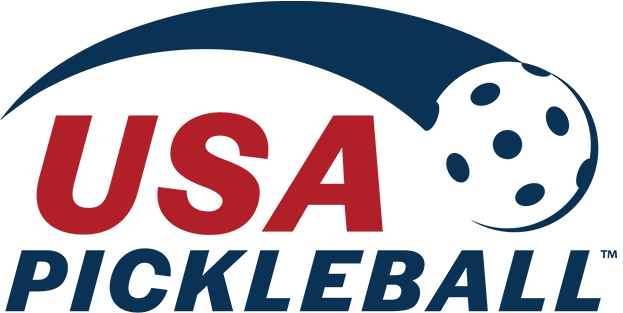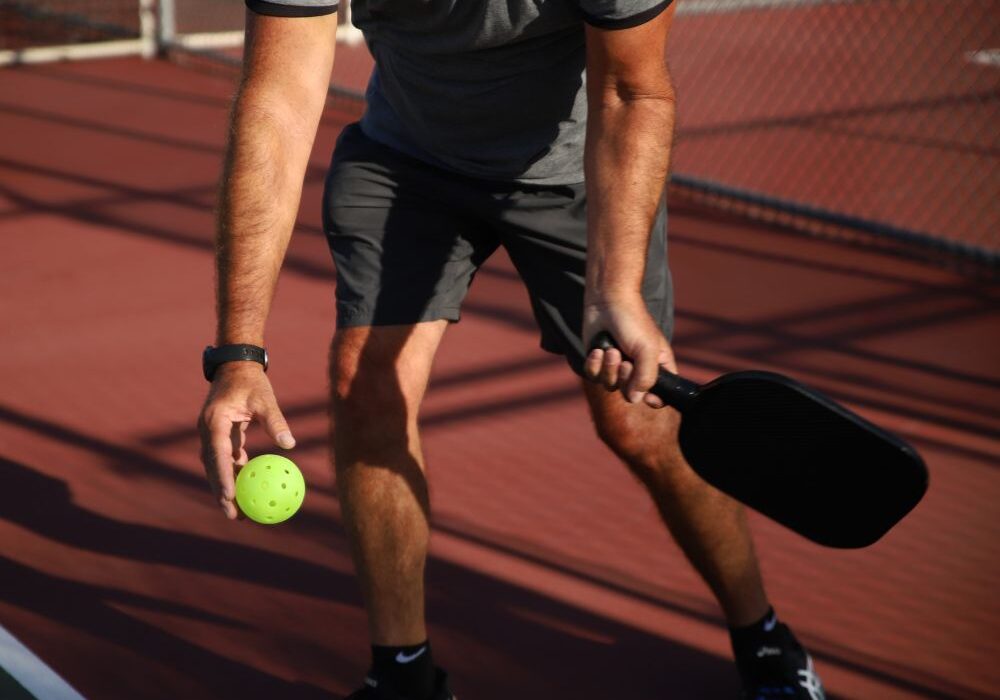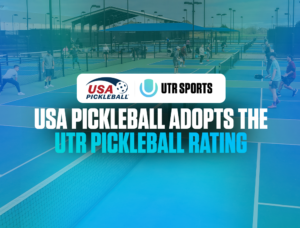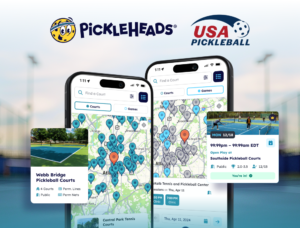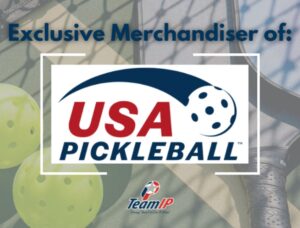How USA Pickleball Officials Are Working To Make The Sport Quieter
Carl Schmits and his team at USA Pickleball are using technology to lessen the sounds of the game for environments that may be more sensitive to noise.
By Bob Reinert
Red Line Editorial
People in and around the sport will admit it — pickleball noise can be disruptive for communities more sensitive to sound.
“We acknowledge that,” said Carl Schmits, USA Pickleball’s managing director of equipment standards and facilities development.
Now, Schmits and a team at USA Pickleball are on a mission to do something about it. Their efforts have already resulted in the emergence of a “quiet category” of equipment and facility materials meant to make pickleball easier on the ears of nearby neighbors.
“We had launched a research project last year to characterize the sound of a ball hitting a paddle, to characterize a good cross-section of existing paddles and equipment — balls included — out there,” Schmits said. “And with that data, we were able to create what we felt was an achievable and meaningful target to establish a quiet category.”
As Schmits pointed out, most recreational-level paddles available from big box retailers or online suppliers are made with materials that produce 90 decibels. The quiet category’s target is 80 decibels.
“That 10 decibels represents, from a perception standpoint, an acoustic footprint about half as loud, and that’s something everybody can understand,” Schmits said. “A typical ball striking a paddle swung very hard is around 1,100 to 1,200 hertz. That, for a percentage of the population, is a sound that bothers them.”
According to Schmits, lower frequencies are less bothersome to most people.
“And so, we introduced 600 hertz as the ceiling for the category,” said Schmits, “that also being half the 1,200 hertz spectrum component.”
Schmits said sounds can be dampened by paddle surface coatings and sub-surface materials, though the underlying goal is always to maintain the nature and feel of the game. New equipment that plays totally different would be a tough sell, Schmits said.
So, before launching the quieter products, Schmits and his team put it through extensive testing to make sure it would “deliver a playability that players expect and like.”
Paddle technology is just one area where noise can be muted; balls are being developed that would bring universal quieting to facilities no matter what paddle is used.
“They’re doing this through an innovative materials and design of the ball itself,” Schmits said. “I’m very excited about the approach. It’s got to play in a very similar manner to what you’re used to today.”
In addition, new quieting technology can be applied to the facilities themselves.
“There’s been considerable work in this area, including new materials being used for (sound) damping,” Schmits said. “So, for example, sound-attenuating fabric. There’s been the application of acoustic foam, the same material used in (recording) studios. I’m very excited about developments here.
“In stopping the acoustic signature of play on a court, some materials can also reflect a good portion of it back. That does affect the player experience.”
That’s why absorbent materials are so important in pickleball facilities.
“We’re starting to (demonstrate) those in various hotspots around the country, inviting abutters, municipal leaders and press to see what this equipment can do,” Schmits said of the various solutions. “There’s the analysis and evaluation up front. We’re working with research entities that are developing (artificial intelligence)-driven acoustic analyses that look at existing data from the location itself.”
Schmits said “aural visualization” is applied to the problem.
“That’s where you would take, for example, 360-degree spherical measurements within a facility, whether indoors or outdoors, and you could overlay a heat map of the acoustic energy around that,” he said. “You can look for hotspots and leakage, you can look for reflections in an indoor facility and be able to address those gaps in the solution, or you could put some baffles or absorbent materials where necessary.
“We’re really trying to raise the bar in terms of how it’s measured, how our sport might be contributing to the local soundscape, as opposed to road traffic, flyover traffic, reflections from adjacent buildings. So, there’s a much more accurate and granular assessment of that environment. This type of approach is used in sound stages, concert auditoriums, venues like that.”
All of this is easier to do when planning facilities rather than once they are built, Schmits said.
“Our position is, don’t break ground before speaking with us,” he said. “We advocate early planning with a proper assessment to understand what materials may be needed to make a facility acceptable to the local community.”
Whether it’s equipment or facilities or some other avenue, these efforts all point to a quieter future for pickleball.
“It’s been a significant effort by USAP and industry partners, as well,” Schmits said. “Research takes time and resources. Doing it right the first time is what we’re trying to do while still making necessary progress.”
Bob Reinert spent 17 years writing sports for The Boston Globe. He also served as a sports information director at Saint Anselm College and Phillips Exeter Academy. He is a contributor to TeamUSA.com on behalf of Red Line Editorial, Inc.
